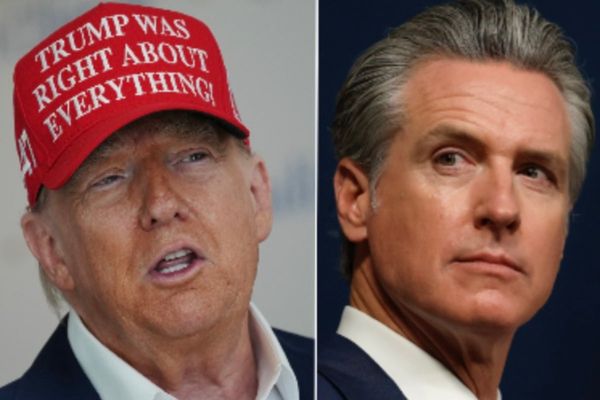Designer Karl Lagerfeld held a unique working relationship with Anna Wintour, the fabled editor of Vogue magazine and editorial director of Conde Nast. And she made her admiration clear last month at the latest Met Gala, which honored her friend.
Lagerfeld created the clothes "I've worn for the most important events in my life," she said at the annual "fashion's biggest night." His clothing, she added, is "a uniform, a kind of armor and a way of holding certain moods and memories close. His fashion does for me what fashion should. It makes me feel more confident in being myself."
Wintour is just one person the fashion icon's work touched. In a career that spanned more than six decades, Lagerfeld proved one of the most lasting fashion designers. He was also among the most prolific.
"When I first met him, he was designing for Chanel, Chloe and Fendi. Three major houses," William Middleton, author of authoritative biography "Paradise Now: The Extraordinary Life of Karl Lagerfeld," told Investor's Business Daily. "Chanel had four shows a year, two couture and two ready-to-wear. The other houses had two major shows a year. That's eight shows annually. No other designer was doing that."
Follow Your Passion Early, Like Lagerfeld
Lagerfeld (1933-2019) was more than a designer. He was a highly regarded fashion and portrait photographer, a book publisher and even an occasional curator of museum exhibits.
In some ways, Lagerfeld was lucky. For one thing, he knew what he wanted to do at a very early age. Not many people do. As a youngster he showed skills as an illustrator and, when asked, would even sketch dresses for girls in his class.
Also, his parents were wealthy enough to support and even indulge him. In 1952, at age 19, he left school and headed for Paris. Two years later, he won the prestigious International Woolmark Prize for what he called a cocktail coat. It earned him a substantial cash award and the right to have his design manufactured. And most important, he quickly became a significant figure in Paris couture.
Keep Creativity Flowing
Lagerfeld's first break came when he was named artistic director of Jean Patou. He created 10 shows for the venerable house over five years. But "it was only two collections a year of 60 dresses, and I was bored," he said.
So Lagerfeld left the company. He began freelancing for French, Italian and Japanese companies. In part he designed for so many disparate firms and markets because he stayed on top of changing tastes.
Lagerfeld once said: "You know what (noted French biologist) Prof. (Jean) Rostand did with insects? He observed. Well, I did the same."
Middleton noted that Lagerfeld "was super-involved in the culture of his time. He knew everything about everything that was going on: art, music, cinema. All that knowledge fueled his design."
And he changed as culture changed. Ines de La Fressange, a French supermodel and fashion designer, said: "Karl was absolutely determined not to take the easy way out. He could've had even more success doing something that was much easier, by repeating himself. But Karl never yielded to that temptation. It was as though he wanted to keep working so hard just for himself, in order to be able to look at himself in the mirror."
Take A Risk Like Lagerfeld
In 1964 Lagerfeld signed on with Chloe, an early ready-to-wear brand. Two years later he added Fendi to his portfolio — a partnership that would last until his death more than four decades years later.
But in 1982 Lagerfeld took the first of several huge bets, all of which might have hurt his reputation and even threatened his career. Keep in mind that at this point Lagerfeld's resume was unblemished. He was at the height of his career when Chanel approached him to take over as creative director. Chanel at the time was a design house that had gone steadily downhill since the death of its founder, Coco.
Chanel was, Middleton said, "practically bankrupt. The idea that he would risk it to take over Chanel didn't make sense to most people." People wondered how a turnaround was even possible. "Chanel is something my mother, my grandmother wears. Yet by 2019 it had revenues of approximately $11 billion," Middleton said.
Changes Lagerfeld made, though, turned the company around while still respecting its tradition. "He approached Chanel with a sense of that house's history," Middleton said. "He studied the past. It wasn't like he went from here to (all the way over there)."
"But he went from here to (just) here — and then went further," Middleton said.
Make A Name For Yourself
In 1984, Lagerfeld started his eponymous design house. And in 2004 he pushed the risk accelerator to full speed ahead. That's when he signed on to do a collection for H&M, the Swedish behemoth with stores around the world. No one had successfully mixed high fashion and mass merchandise.
But Lagerfeld saw the potential while riding in his office elevator. He'd ride up with young women who'd carry a Chanel bag but wore H&M coats because they couldn't afford Chanel coats.
Middleton quotes Daniel Schneider, the art director who proposed the idea to Lagerfeld, as saying: "Karl sensed what it could mean, he wanted to do it, and he wanted to do it first."
Maintain Your Humility
Lagerfeld did not take himself too seriously. A journalist once asked him if he was too frivolous. He replied: "How can I not be? I sell wind, which is, for now, blowing in the right direction."
On another occasion, he was sitting for a photo portrait. Lagerfeld got up to check his hair and makeup. "He told the photographer, time to freshen up the marionette. He knew he's become a puppet and he laughed about it all the time," Middleton wrote in "Paradise Now."
While he may not have taken himself seriously, he certainly took his work that way. "I really think another point that's really important about Karl's success is that he was not a designer who felt he was too lofty to be bothered with business affairs. He was someone who cared a lot about how things were selling," Middleton told IBD.
Lagerfeld paid close attention to customer demand. "Bruno Pavlovsky, (then) the president of Chanel, told me every time he (Pavlovsky) returned from an international trip, Karl would grill him. He wanted to know what's working. What isn't working."
Unlike many designers, Lagerfeld didn't see sales as someone else's job. "Karl was interested in making sure that what he designed was selling," Middleton said. "There are a lot of designers who feel it's my job to design and it's up to the suits to sell. Karl was very interested in the fact that his work was reaching the public."
Lagerfeld: Don't Overlook Details
Lagerfeld paid close attention to detail in his designs. He'd also spend up to six months working with designers to create the proper atmosphere. He minded budgetary restraints. But he'd pay up when it made sense to make a splash.
Once he reportedly paid millions to an A-list celebrity to take part in a two-minute short film and appear at a Chanel show. Asked about it by a journalist, he replied: "No idea. I don't work in accounting."
This coming from the same man who said: "I hate rich people who live below their means. Money needs to circulate."
Despite having his name on the door, Lagerfeld knew his success wasn't a one-man show. After each show, he held a reception for the entire staff, from the seamstresses on up. These events lasted two to three hours. Karl spent time with everyone, chatting and posing for photos.
Lagerfeld knew that a great design is one thing, but a lasting legacy is quite another.
Designer Karl Lagerfeld's Keys
- Rose to be among the most prolific fashion designers of all time, working for multiple houses at the same time.
- Overcame: The occasional bad review criticizing his work.
- Lesson: "Nobody learned anything from success, but from your mistakes you learn a lot."







